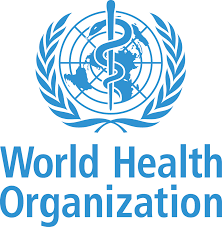WHO GUIDELINE ON SYPHILIS SCREENING AND TREATMENT FOR PREGNANT WOMEN
Syphilis is a bacterial STI caused by Treponema pallidum that results in substantial morbidity and mortality. Syphilis is transmitted through sexual contact with infectious lesions of the mucous membranes or abraded skin, via blood transfusion, or transplacentally from a pregnant woman to her fetus. Mother-to-child transmission of syphilis (congenital syphilis) is usually devastating to the fetus if maternal infection is not detected and treated sufficiently early in pregnancy. The burden of morbidity and mortality due to congenital syphilis is high. In 2012, an estimated 350 000 adverse pregnancy outcomes worldwide were attributed to syphilis, including 143 000 early fetal deaths/stillbirths, 62 000 neonatal deaths, 44000 preterm/low-birth-weight babies and 102 000 infected infants. Most untreated primary and secondary syphilis infections in pregnancy result in severe adverse pregnancy outcomes. Latent (asymptomatic) syphilis infections in pregnancy also cause serious adverse pregnancy outcomes in more than half of cases. The fetus can be easily cured with treatment, and the risk of adverse outcomes to the fetus is minimal if the mother receives adequate treatment during early pregnancy – ideally before the second trimester.
RATIONALE FOR THE GUIDELINES
Since the publication of the WHO Guidelines for the management of sexually transmitted infections in 2003, changes in the epidemiology of STIs and advancements in prevention, diagnosis and treatment necessitate changes in STI management.
Screening all pregnant women for syphilis at first mantenatal care visit is recommended in many countries of the world and is being scaled up rapidly in countries committed to the elimination of mother-to-child transmission (EMTCT) of HIV and syphilis. In most settings, the screening and diagnosis of syphilis is based on serologic tests. Recent advances in the development of rapid treponemal syphilis tests mean that there are additional testing options that could be added to the historical set of screening tools, which include laboratory-based non-treponemal tests (e.g. RPR and VDRL) and treponemal tests (e.g. TPPA, TPHA). Countries are in urgent need of guidance related to screening for syphilis in pregnancy.
This guideline provides updated recommendations for syphilis screening and treatment for pregnant women based on the most recent evidence and available serologic tests for syphilis. Recommendations relating to the treatment of syphilis for pregnant women have been directly copied from the 2016 WHO guidelines for the treatment guidelines of Treponema pallidum (syphilis) and reference is made (and links provided for ease of use) to the recommendations for treatment of congenital syphilis, which were also included in the 2016 publication.
This publication is one of several guideline modules for specific STIs. Other modules approved by the WHO Guidelines Review Committee (GRC) are for treatment of Chlamydia trachomatis (chlamydia), Neisseria gonorrhoeae (gonorrhoea), genital herpes simplex virus (genital HSV) and Treponema pallidum (syphilis). These modules were developed together and are linked. In addition, future work will provide guidance for STI syndromic approach, STI laboratory diagnosis and screening, clinical management, STI prevention, and treatments of other STIs. All these modules will also be consolidated to form comprehensive STI guidelines. It is strongly recommended that countries take updated global guidance into account as they establish standardized national protocols and adapt it to the local epidemiological situation and antimicrobial susceptibility data.
OBJECTIVES
The objectives of this guideline are:
- to provide evidence-based guidance on syphilis screening and treatment for pregnant women; and
- to support countries to update their national guidelines for syphilis screening and treatment for pregnant women.
METHODS
This guideline was developed following the methods outlined in 2014 WHO handbook for guideline development. The Guideline Development Group
(GDG) included international STI experts, clinicians, researchers and programme managers. The GDG prioritized questions related to screening and treatment of syphilis in pregnant women. A methodologist and a team of systematic reviewers from McMaster University, the WHO Collaborating Centre for Evidence-Informed Policy, independently conducted systematic reviews or updated systematic reviews of the literature for the diagnostic accuracy and effectiveness of different syphilis screening and treatment strategies. Cost-effectiveness analyses were used to inform these recommendations. The evidence was assessed using the Grading of Recommendations Assessment, Development and Evaluation (GRADE) approach and presented to the GDG. Declarations of interests were obtained from the GDG and conflicts of interest were managed according to WHO guidelines and declared before the recommendations were discussed and analyzed. Research implications were also developed by the GDG.
RECOMMENDATIONS
The recommendations summarized in Tables 1 and 2 apply to pregnant women for the screening and treatment of syphilis. These recommendations address syphilis screening strategies in different care settings, an optimal sequence of tests for syphilis screening, and subsequent treatment. The recommendations for the treatment of syphilis in pregnant women and of congenital syphilis have been previously published and updated (2016) in the WHO guidelines for the treatment of Treponema pallidum (syphilis). The same recommendations for the treatment of syphilis in pregnant women (see Table 2) are included in this guideline to provide a comprehensive approach to managing pregnant women, including recommendations for both screening and treatment.
Please find the Guideline here.
